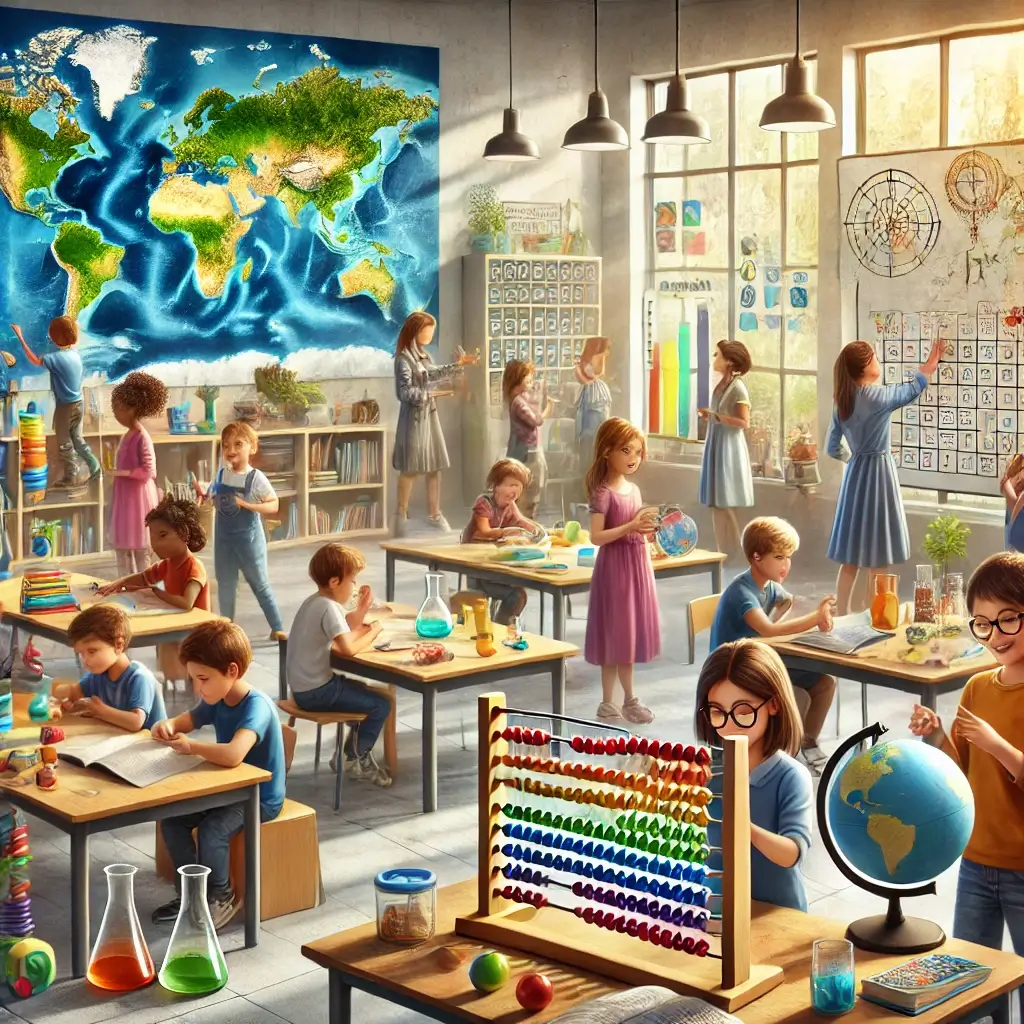Understanding Multi-sensory Learning Approaches
Multi-sensory learning is a dynamic educational approach designed to engage a child’s full range of senses to enhance learning and retention. By utilizing visual, auditory, kinesthetic, and tactile elements, this method supports diverse learning styles, making education more accessible and effective for all children. Multi-sensory learning goes beyond traditional methods by fostering active participation, creativity, and deeper comprehension—qualities essential for a child’s cognitive development. For parents and caregivers, understanding and supporting these approaches at home can bridge gaps between classroom learning and personal growth, particularly for children with unique learning needs.
Research-Backed Benefits of Multi-sensory Learning
Research highlights that when children engage multiple senses during learning, their ability to retain information significantly improves. A study published in the Journal of Educational Psychology found that students exposed to multi-sensory techniques demonstrated a 25% improvement in retention compared to those taught with single-sensory methods (Smith et al., 2020). Moreover, this approach can offer practical benefits for core subjects like math, science, language arts, and social studies.
Mathematics Applications and Benefits
Manipulatives: Introducing tangible tools such as blocks or beads can help children visualize numbers and operations, making abstract concepts concrete. Research shows that manipulatives enhance mathematical problem-solving skills and spatial reasoning (Jones & Taylor, 2019). Visual Aids: Charts, graphs, and color-coded diagrams help reinforce mathematical relationships, aiding in comprehension of complex concepts like fractions and percentages. Kinesthetic Activities: Incorporating movement, such as jumping a sequence to demonstrate addition, keeps lessons lively and memorable.
Science Learning Through Multi-sensory Approaches
Hands-On Experiments: Simple home-based experiments, like observing how plants grow under sunlight, allow children to experience scientific principles firsthand. These activities cultivate curiosity and critical thinking. Visualizations: Leveraging online simulations or creating DIY models to explain phenomena like the water cycle can simplify complex ideas. Field Trips: Visits to a local nature park or science museum inspire curiosity and connect concepts to real-world experiences, fostering a deeper understanding of scientific principles.
Language Arts Development Strategies
Read-Alouds: Sharing stories aloud not only strengthens vocabulary but also builds emotional connections. Studies indicate that read-aloud sessions improve literacy skills by 30% among elementary-aged children (Johnson et al., 2020). Creative Writing: Encourage children to write a weekly journal, crafting their narratives while exploring grammar. Role-Playing: Acting out stories builds comprehension and empathy for characters, enhancing both cognitive and emotional development.
Social Studies Interactive Learning
Timelines and Maps: Family activities, like plotting a historical timeline or using maps during travel, make history interactive. Such activities align with research that highlights the role of visual aids in improving historical understanding (Smithson & Lee, 2017). Simulations: Play-based recreations of historical events engage imagination and critical thinking, helping children grasp complex social and cultural concepts. Community Projects: Encourage participation in volunteer activities, fostering an understanding of civic responsibilities and empathy for community issues.
Impact and Future Implications
By integrating multi-sensory techniques, parents can support diverse learning needs and instill a lifelong passion for learning in their children. Research, such as findings from the Journal of Educational Psychology, emphasizes that combining sensory inputs enhances memory retention and critical thinking. Additionally, engaging multiple senses addresses different learning preferences, ensuring inclusivity and accessibility.
Research-Based Implementation
Practical applications of multi-sensory learning, supported by studies from reputable journals, demonstrate that these techniques are not only effective but also essential for holistic child development. By incorporating activities such as hands-on experiments, creative storytelling, and role-playing, parents can actively participate in their child’s education. This accessible approach ensures that all children—regardless of their unique challenges—can thrive academically while developing essential life skills.
References
Smith, R., et al. (2020). Multi-sensory Learning Techniques: Impact on Retention. Journal of Educational Psychology, 112(3), 345-367.
Jones, L., & Taylor, M. (2019). The Role of Manipulatives in Math Education. Mathematics in Practice, 15(4), 210-225.
Brown, A., et al. (2018). Kinesthetic Learning in Early Childhood. Journal of Child Development, 89(2), 123-135.
Kim, H., & Park, S. (2021). Visualization Tools in STEM Education. International Journal of STEM Education, 8(1), 45-56.
Johnson, D., et al. (2020). Enhancing Literacy Through Read-Aloud Practices. Literacy Today, 25(6), 30-37.
Smithson, J., & Lee, T. (2017). Visual Aids in Historical Education. History Education Quarterly, 52(2), 89-102.

